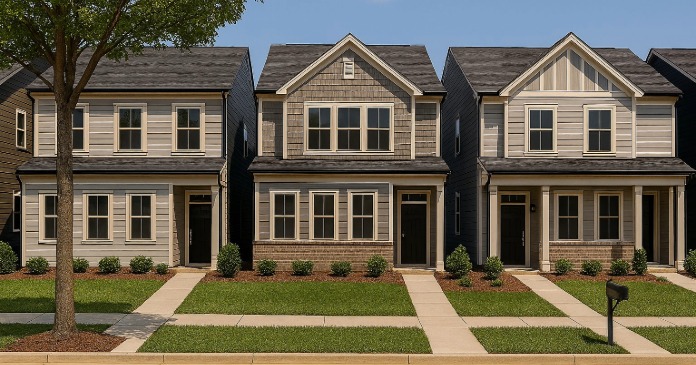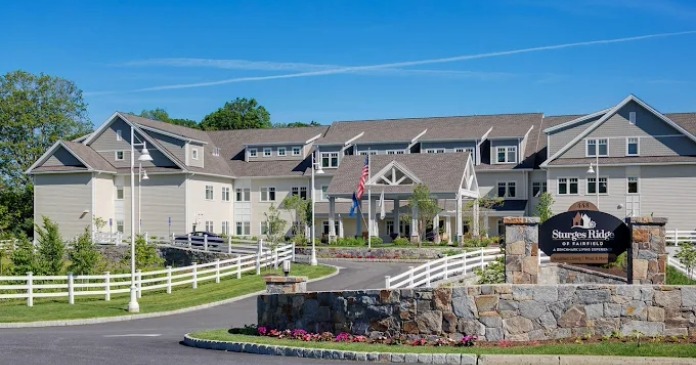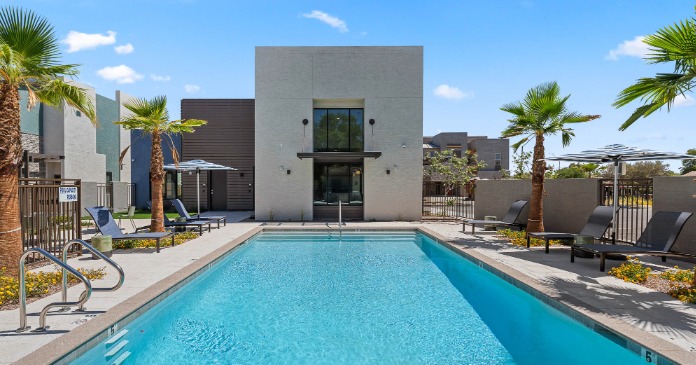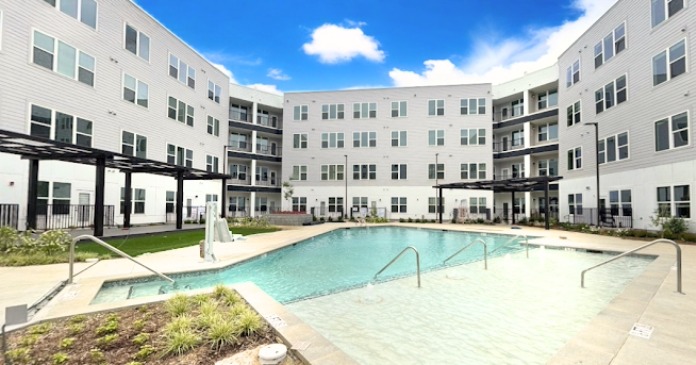Luxury amenities and finishes like ceramic tile, high ceilings, wireless Internet connection and state-of-the-art appliances, business centers, and fitness rooms that once provided multifamily builders the opportunity to differentiate their products from run-of-the-mill communities have become the norm, leaving little the multifamily player can offer that’s uncommon.
A peaceful, quiet living space is one luxury that renters and condominium buyers are looking for in this increasingly noisy world we live in. So offering the sound of silence provides a golden opportunity to stand out from the competition. Owens Corning has come up with a package of products that promises to help multifamily developers turn down the volume in the units they build.
The company’s iconic Pink Panther has been showing up in person and in ads to inform builders about the QuietZone family of products Owens Corning says can dampen not just the racket coming from the outside, but also traveling between and within units, up to 85 percent more effectively than traditional construction techniques.
In a survey done a few years ago by the company that made branding history in 1987, when it became the first ever to trademark a color, 43 percent of the builders who responded agreed that acoustics improvement is one way to differentiate and upgrade their product. And, at about the same time, the U.S. Census Bureau reported that Americans cite noise, more than crime, litter, traffic or inefficient government, as the biggest problem affecting their environment. According to another study conducted more recently by Owens Corning, which last April renewed its 25-year-old agreement with MGM Consumer Products to use the cartoon character that is the same color as the company’s insulation material as its mascot for another 15 years, 78 percent of consumers are frustrated by unwanted noise in their homes, said Harry Alter, a senior engineer at the Owens Corning Science & Technology Center in Granville, Ohio, where QuietZone was developed.
That study’s results also indicate that 71 percent of home buyers would pay more for solutions that would dampen the cacophony created within their dwellings by everything from rackety HVAC systems, blaring home theaters, clattering childrens’ toys and raucous video games to the growing number of appliances that slosh, rumble and grind. Another study by Spanish researchers in 2005 found that households in urban areas would be willing to pay about four Euros per decibel per year for noise reduction, confirming that cries for quiet are being heard around the globe.
Unwanted sound is a problem that spans all types of housing, from detached homes to multi-unit apartment or condo communities. “We know that neighbor noise is an issue in multifamily environments,” Portia Ash, Owens Corning business manager for residential noise control, said recently, explaining that the target customers for QuietZone’s suite of products that treat a dwelling from foundation to ceiling for noise reduction are builders of four-story and below wood-frame product.
“Our statistics said that if apartment building owner-operators can differentiate their properties from a noise standpoint, that will resonate with potential renters. And it definitely helps with renter retention because one of the key reasons people move out is because of issues they have with noise,” said Ash, who is based in the company’s headquarters in Toledo. “There’s a greater concern about noise, particularly in the multifamily arena, just because of the degree of complaints and possible legal ramifications that occur when builders don’t understand the dynamics of noise control and flanking noise and all that and those things are telling builders that they had better look at noise control if they really want to be successful,” said Alter, who has worked as an Owens Corning acoustical engineer since the company began to address the interior residential noise control issue about 10 years ago and toured the country with Ash when Owens Corning took QuietZone on the road to showcase the product’s effectiveness through the company’s Quiet Down America Mobile Marketing Tour campaign that was launched about a year ago.
The tour included numerous product demonstrations that amazed and delighted those who participated, said Clarke Berdan, a research associate at Owens Corning Science & Technology Center, who accompanied Alter and Ash on the road show.
“I think it really opened up people’s eyes,” said Berdan, recalling a demonstration that involved heating and cooling system noise transmitted by two kinds of ducts–one a metal duct and the other a QuietR duct made of fiberglass by Owens Corning.
“Just watching people’s faces was entertaining,” said Berdan of the duct demo. “They’d be shouting through the metal ducts and it would just about blow you away on the other side. Then they’d use the same level to shout through the fiberglass ducts and people couldn’t believe what they were not hearing. They’d make other people go around and try it. It just absorbed the noise that well.” In another demonstration, visitors experienced the benefits of the Quiet Retreat level of QuietZone’s offerings, which is ideal for a common wall in a multifamily environment or home office or bedroom, where silence is essential, or a media room or second-floor laundry room, where noise can be contained. One of the demo walls was treated to such a level that when someone was using a hair dryer on one side, people on the other side of the wall could see their hair move, but there was absolutely no sound. “It was pretty miraculous. They had to hear it to believe it,” Berdan said.
“We’ve done a lot of research looking at multifamily kinds of environments to understand the best wall assemblies and floor assemblies to deal with neighbor noise,” said Ash. The company offers wall assembly products including wall studs used in conjunction with acoustical fiberglass batts that absorb sound vibrations within the wall cavity, and acoustic sealant that, when applied in the gaps between wall stud plates and the subfloor and around electrical outlets, air ducts and doors and windows, stops sound from traveling through small cracks and openings. Other solutions include doubling up on the gypsum board to reach the height of halcyon hush the Quiet Zone suite of products can provide– QuietRetreat.
“The other thing that folks typically worry about in the multifamily environment is neighbor-to-neighbor noise from floor-to-ceiling combinations. Our floor mat product and our batt products are great in those environments,” she said. “We recommend a floating floor assembly, where you literally separate the actual finished floor from the structural floor of the units, using products like our floor mat, reducing much of the impact sound from people walking around and even some of the airborne noise from getting into that floor structure and penetrating to other units,” she explained, adding that the floor mat also reduces noise traveling between side-by-side units.
One might expect such revolutionary solutions to add to the cost of construction of a quieter dwelling. But Ash and Alter said that, by using the QuietZone framing system, multifamily developers can achieve noise attenuation levels that typically require a double-wall construction. “So, you’re saving on labor and material because you’re only building one wall now and saving floor space because the single wall has a narrower footprint,” Alter said.
“Multifamily companies we have worked with have found the QuietZone floor and wall assemblies to cost either the same as, or in some instances less than, the double-stud or stagger-stud common wall alternatives,” Ash said.
“QuietZone is more than just one product in the wall or the floor. It’s a series of products that work together to control the overall effects of noise from one unit to the other. It’s a system that ties together,” agreed Alter, adding that treating only one sound transmission source can be a waste of time and money. “You could build a wall between units that was incredible, but, if the floor that it was sitting on was not treated or the sub-floor is continuous under that wall, you can’t bring its performance up any higher because the floor is the weakest link,” said Alter, who looks first for the weakest link in any sound barrier construction when he provides consulting services to builders who send their plans to Owens Corning’s science and technology center for his recommendations.
Companies ranging in size from the very large nationwide home builders like Taylor Woodrow Homes to smaller builders like Duffy Homes, which is building 100 luxury condos in Downtown Columbus, Ohio, have asked Alter to help them solve potential noise problems while still in the design phase because they realize it’s almost impossible to fix some problems after a structure is built. Lily Wang, Ph.D, P.E., an assistant professor of architectural engineering at the University of Nebraska in Lincoln, who has a small acoustical consulting business on the side, last month went to the aid of a troubled project in Downtown Omaha, where the adaptive reuse of an old warehouse as loft apartments built above a ground-floor nightclub has turned into a noise nightmare. “The noise was resonating into all of the second-floor apartments and they had lost lots of money because those people moved in and moved right out because they were unhappy with the acoustics, especially on a Friday or Saturday night when the nightclub was hopping,” said the expert, who participated in Owens Corning’s presentation of its QuietZone products last spring at the Pacific Coast Builders Conference in San Francisco.
“It’s just such a sad case,” Wang said of the 32-unit multifamily disaster in Omaha that hasn’t yet reached the litigation stage, but might. “Now, they’re trying to go back and fix it and it’s always a much more difficult problem to do that. Everybody in that situation–the building owner, the nightclub owner and the developer–is still being nice, but they’re all treading very carefully, because who pays for the retrofits now? And, if they don’t fix it, they’re in big trouble because they can’t rent out those second-floor units.”
Tearing the structure back down to the studs really is the only way to fix the problem, but the unhappy players aren’t ready to go there, yet. Instead, they’re applying bandages that don’t seem to work and they’re very frustrated, Wang said.
“Once you’ve built it, you have to worry about lots of different paths of sound. It could be going through the pipes, the edges of the walls, through the floor itself or the HVAC system and that is the problem. If they had brought in an acoustical consultant at the very beginning, that consultant would be able to fight all of those paths, but now we’re trying to figure out what the worst path is to fight, because it’s all bad. You fix one and it hardly does anything because there’s another path over there that didn’t get considered,” she said.
Owens Corning’s Acoustic Research Center (OCARC) frequently uses computer modeling to help builders create the best possible acoustical designs for their projects before they break ground, as well as for testing the probable effectiveness of new potential products. Modeling can quickly narrow the new product design choices without having to manufacture the product.
“OCARC is really the godfather of much of the acoustical and noise control testing that’s been done in the U.S. since back in the early 1960s, so it’s there that we do a number of modeling tests, standards testing and design testing on all the products we develop,” Alter said.
“Much of the acoustic data and research you’ll see in many of the textbooks that are used today originated here at our acoustic laboratory at the Granville, Ohio technical center. The development of QuietZone took a lot of that technology and applied it at the residential level,” said the engineer, who graduated from Columbia University in New York about 25 years ago and went to work for Industrial Acoustics Company, where he developed new products and designed test facilities for 15 years. Just before he left Industrial Acoustics, he helped design the anechoic chamber used at OCARC.
That chamber depends on the effective use of fiberglass wedges to create a room completely devoid of echoes. “Based on their design, they will absorb a number of wavelengths from very low bass frequencies to very high frequencies,” Alter said, describing the aural sensation in the room as “very eerie.” Even in the quietest library, the eardrums are always vibrating a little, so it feels somewhat uncomfortable when there’s no sound present within an anechoic environment.
When sound is generated on purpose, it is to determine the acoustical properties of a product or material. In the anechoic chamber, it is possible to actually see sound through the use of acoustic holography. The holographic imaging of a wall in the chamber paints a picture of the sound that is emitted from it. “We can paint a picture of a wall showing where sound passes through it. If you have wood studs and there’s sound being generated through them, you’ll get sound that shows itself and its intensity via a variety of colors and you can see exactly where these areas of sound occur on the wall. Typically, the hotter colors like yellows and reds mean there’s more sound generation and you’ll have these vertical stud lines show themselves, whereas the colder, greener, bluer colors represent less energy,” he explained.
The chamber is one of the few in the world that can be converted from a fully anechoic chamber, where 360 degrees of acoustical wedges can be used to test the sound quality of something totally in space, to a hemi-anechoic chamber, with the addition of a removable floor, for analysis of the acoustic properties of a product that typically rests on a floor, said Alter.
In addition, the lab has a number of other instruments with which to study a product’s material properties. “Since sound is basically the movement of air, we can look at the resistance of airflow through a material and determine how well it’s going to absorb sound. We have an impedance tube where we can also test materials and look at the absorption of sound through it from inside this tube, which gives us what’s called absorption coefficient and those coefficients again tell us how well the material is performing.
The research center also houses a reverberation chamber, a huge concrete vault where engineers can measure how wall partitions absorb and attenuate sound. “These tests help us to identify how well a wall partition will reduce noise traveling through it as measured over a broad band of frequencies,” Alter explained.
But, even with all the sophisticated computer programs and high-tech gadgets, “when you take the product out of the laboratory and put it in somebody’s house, it’s a different animal,” said Alter, who used a set of three identical homes, which Owens Corning originally built decades ago to test the efficiency of fiberglass thermal insulation products, to look at the acoustical benefits of the company’s many noise reduction solutions.
Alter also tests products designed for the multifamily builder in the company’s Acoustic Research Experience Laboratory, which is basically a building within a building, consisting of two condo units that are identical, right down to the furniture, but one is treated for noise and the other is not. “We can see how the environment reacts when you put these systems together, when you put insulation in the floors and walls, compared to a home that doesn’t have that insulation.”
Alter said the only way to insure an effective noise control system, is to look at the complete room assembly and adjoining parts. “Sound is one of those things where the devil’s in the details and, if you miss a detail, you could be wasting your time because that’s the detail that’s going to control the performance,” said Alter. That holistic approach is what differentiates the QuietZone solution from noise reduction offerings by other companies that usually include only one or two products, he said.
According to Alter, a successful noise control system begins early in the design process. Retrofit solutions can sometimes be costly and risky. But, one easy and aesthetic solution to reduce interior echoes bouncing around rooms is Owens Corning’s Solserene ceiling that involves stretching a fabric ceiling over sheets of acoustic core affixed to the original ceiling, absorbing the noise that can echo off the hardwood floors, granite counter tops and plaster walls.
Other than that, those who live in older dwellings, like Alter’s 25-year-old home that was built during an era when few homes were treated for sound reduction, might have to turn to the low-tech solution he neither designed nor developed, but must unfortunately depend on until he builds a new QuietZone new home.
















